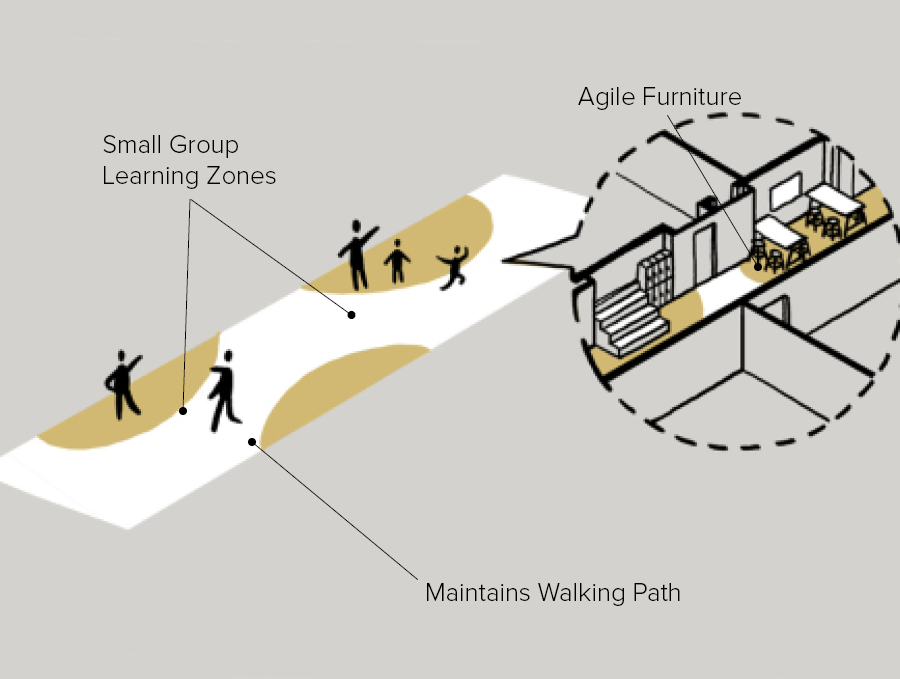
Activate Your Hallways!
By: Nathan Strenge, Randy Fielding, Cierra Mantz
Having spent the first ten years of my career as a teacher stationed within the four walls of a solitary classroom, I often felt the itch to change the scene. The classroom felt like a box, and I wanted the ability to think, teach, and learn outside of it. Looking back, I ask myself what about the classroom made me yearn for something different: Was it the industrial lighting? Was it the openness that caused poor acoustics? Was it the set of desks crammed into the room, limiting movement and restricting certain pedagogies? Or was it just the feeling of a known institutional setting that triggered a sense of hierarchy and group dynamics that I wanted to disrupt? Whatever it was, I became aware that the limitations of a classroom could never truly adapt to the real-time needs of each individual. Furthermore, the wellness goals we are finally beginning to prioritize as a society face major obstacles within a classroom. When kids have no place to go when they feel X (insert your own emotion here), they can feel trapped inside the box that is a classroom.
Aggravating the classroom problem is the space immediately adjacent. For the schools I taught in, and the majority of schools I’ve been in, the hallway is not designed to be a learning space – I’ll refer to these as non-learning hallways. In my experience, non-learning hallways serve two main purposes: (1) circulation paths and (2) a place to store students’ personal items (i.e. house lockers). This may sound benign, but if the byproduct of this design approach is isolated classrooms that inhibit wellness, personalization, and certain pedagogies, it’s a problem that needs to be addressed.
It wasn’t until I started working with Randy Fielding and was introduced to a different spatial paradigm that I understood the full consequences of non-learning hallways. One of my biggest ah-ha moments came when I learned that hallways can make up nearly 30% of a school’s overall area. So not only are non-learning hallways contributing to isolated classrooms, but they are also creating vast stretches of grossly underutilized floor area within the school. Recouping this area is a huge opportunity, financially and educationally.
Since the revelation of non-learning hallways, I’ve had a chance to talk to countless teachers and students who share similar frustrations. “If we just had a decent small group breakout space” and “if I could just have a calm place to relax and feel alone” are common desires I hear. Fortunately, there’s a Design Pattern called Active Hallway that aims to address the problem. If it’s not possible to make the full transition to a Learning Community model, which essentially gets rid of conventional hallways, activating your hallways is the next best thing.
What does it mean to activate a hallway
Activating a hallway means making physical changes so that corridors are able to be learning spaces. When this is paired with an educator mindset shift about where learning happens, the results are powerful. The physical changes can be accomplished in a number of ways, and each school has its own conditions to consider; with that understanding, we’ve seen trends towards fewer and/or smaller student lockers across the globe that can support hallway activation. By eliminating some locker banks and/or replacing full-height lockers with half-height ones, a considerable amount of space is opened for furniture to accommodate individual students and small groups.
Consider this image of a junior high hallway:
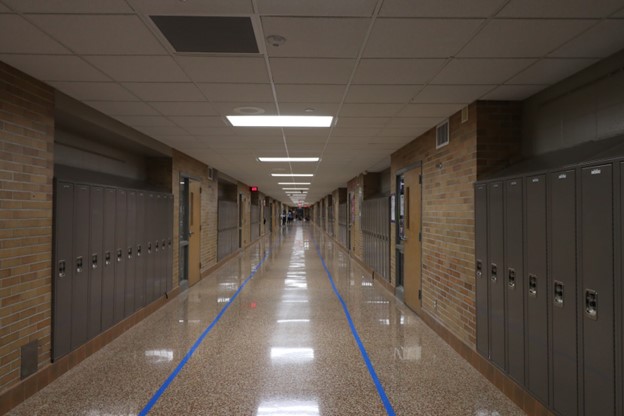
From the image above, a plan to replace the full height lockers with half-height ones opened up enough space for small zones with agile furniture. With this fairly minor change, the hallway was able to be redesigned as a learning space, as you can begin to imagine from the plans below.
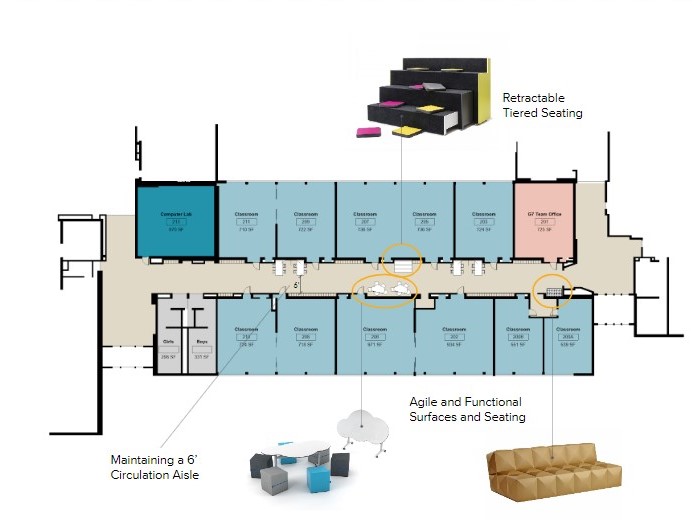
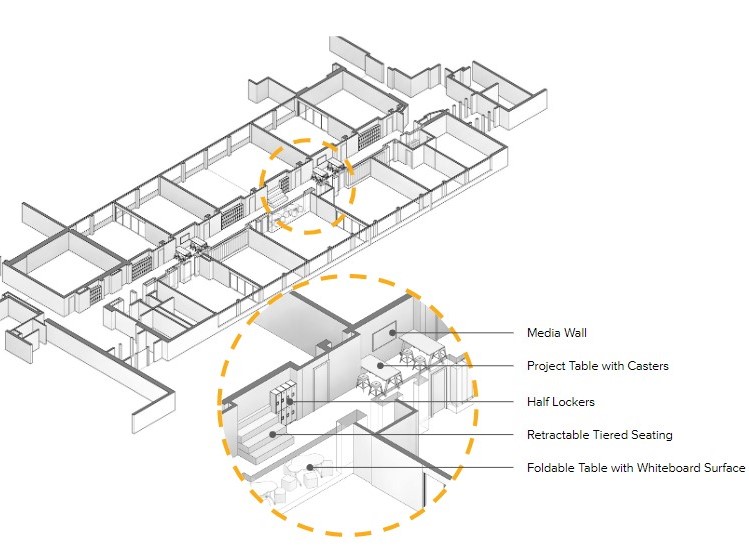
Be Creative As You Activate Your Hallways
To be clear, there’s no one right way to activate a hallway, but creating seating options and workstations is always a good way to incentivize usage. At the same time, considering how the walls are used can serve to spark creativity and interaction. Through the use of writable surfaces and learning walls, like you can see in the two images below, hallways can become places of collaboration, curiosity, and play.
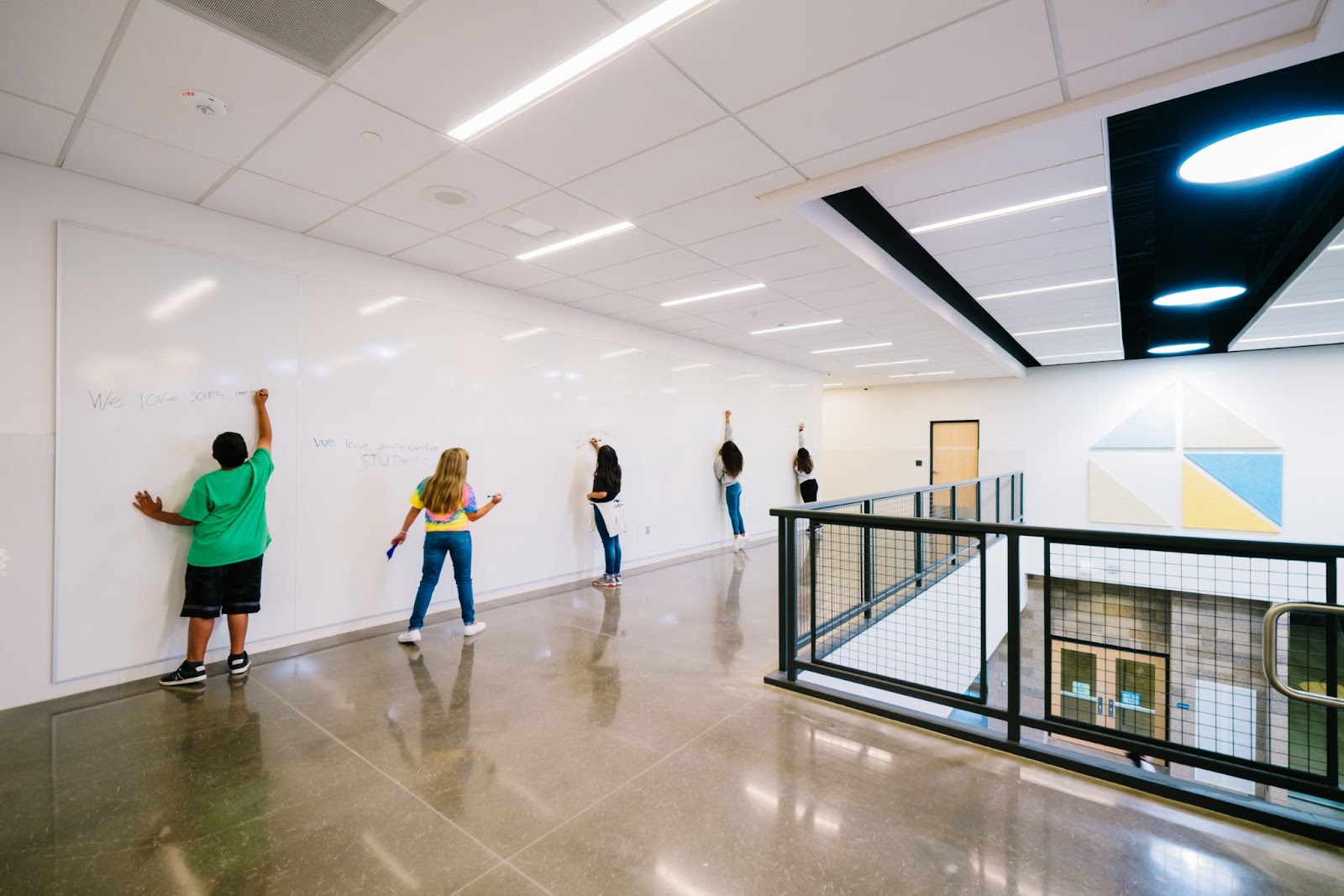
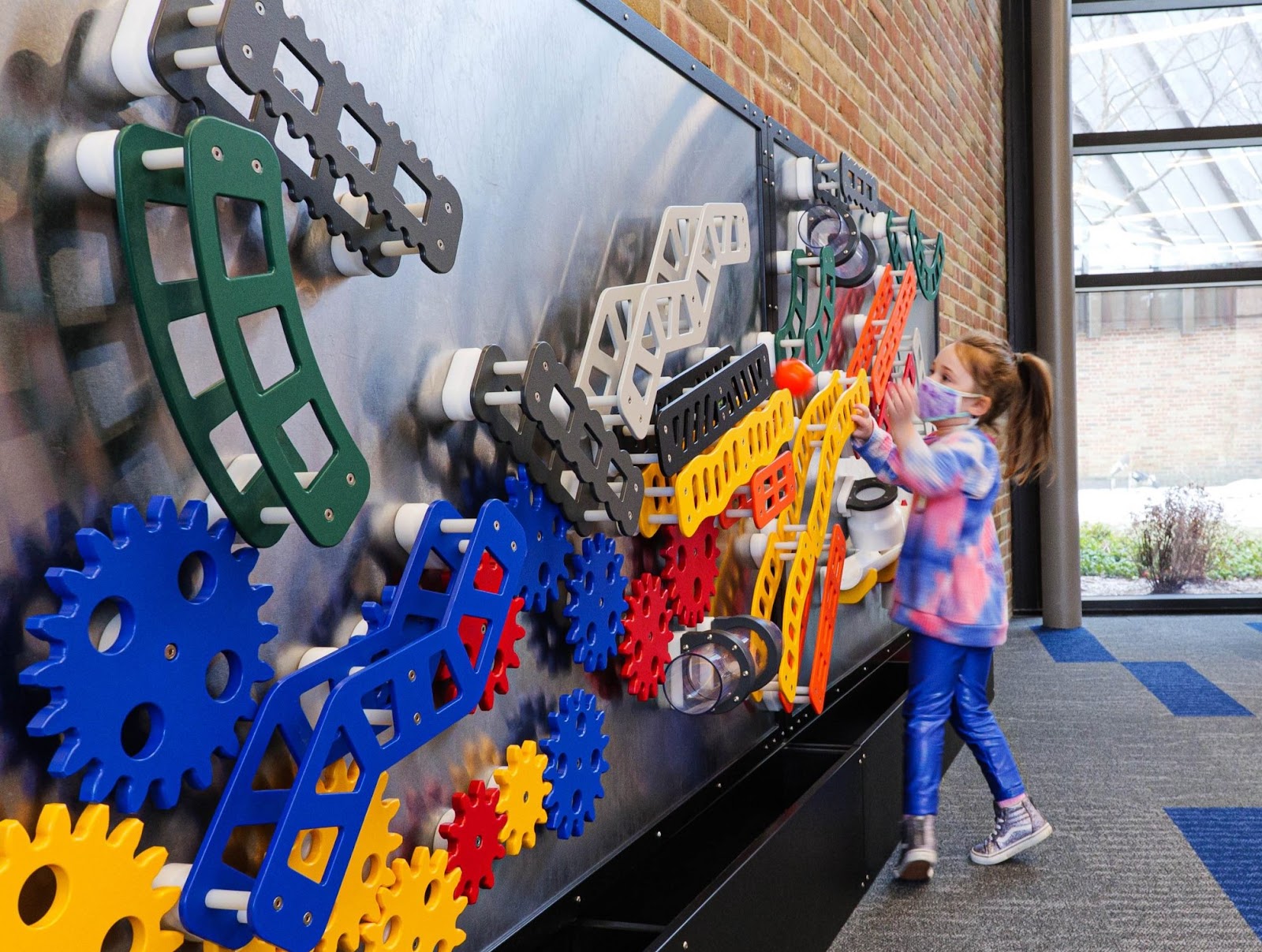
Final Word
If you are a teacher, a school leader, or a student, and you want to break free of the spatial limitations of a classroom, activating your hallways can be a good first step. It can spark a culture shift towards more collaborative practices, give students more agency over the way they use time and space, and shape an environment that is more adaptable to the real-time needs of the people who use it. And best of all, you can do that with minimal construction or sacrificing any existing space. It’s an inexpensive option that can profoundly impact teaching and learning, so what are you waiting for?
Senior Designer at Fielding International, Cierra Mantz is a registered architect with a Masters in Educational Leadership and Societal Change. Through her work, she seeks to champion change within education through innovative design, research, and grassroots community engagement.
Senior Learning Designer at Fielding International and USA Country Lead at HundrED, Nathan Strenge approaches school design with an innovative educator lens. As a teacher of ten years, Nathan’s drive to transform education comes from his belief that all people deserve to learn in an environment that adapts to their unique gifts and needs. Follow Nathan on Twitter at @nathanstrenge.
Stay connected with us on social media platform for instant update click here to join our Twitter, & Facebook
We are now on Telegram. Click here to join our channel (@TechiUpdate) and stay updated with the latest Technology headlines.
For all the latest Education News Click Here
For the latest news and updates, follow us on Google News.

